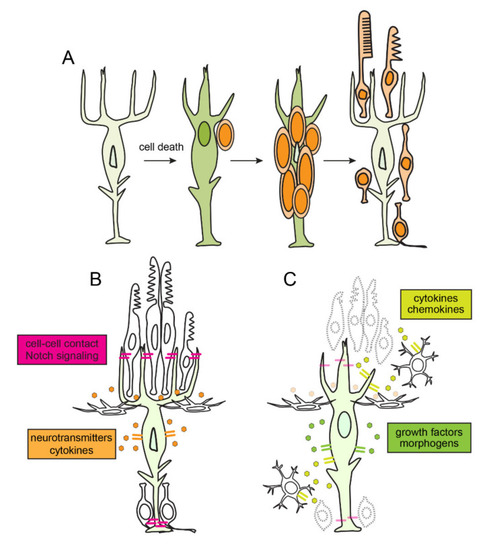Figure 1
- ID
- ZDB-FIG-210503-82
- Publication
- Nagashima et al., 2021 - Inflammation Regulates the Multi-Step Process of Retinal Regeneration in Zebrafish
- Other Figures
- All Figure Page
- Back to All Figure Page
|
Retinal regeneration, regulation of quiescence and reprogramming of Müller glia in zebrafish. (A) Time course of retinal regeneration. Following cell death, Müller glia dedifferentiate and reprogram into a stem cell-like state. Müller glia then undergo interkinetic nuclear migration an asymmetric self-renewing division, which produces a multipotent retinal progenitor. Müller glia-derived progenitors then proliferate rapidly, migrate and differentiate into the ablated retinal neurons. (B) In an unlesioned retina, cell-cell contact mediated signaling, neurotransmitter dynamics, and autocrine signaling mechanisms maintain Müller glia in a quiescent state. (C) In response to cell death, soluble factors, cytokines, and chemokines, secreted from dying neurons and activated microglia induce reprograming of Müller glia. Müller glia themselves secrete growth factors and morphogens which promote reprogramming in autocrine manner. |

